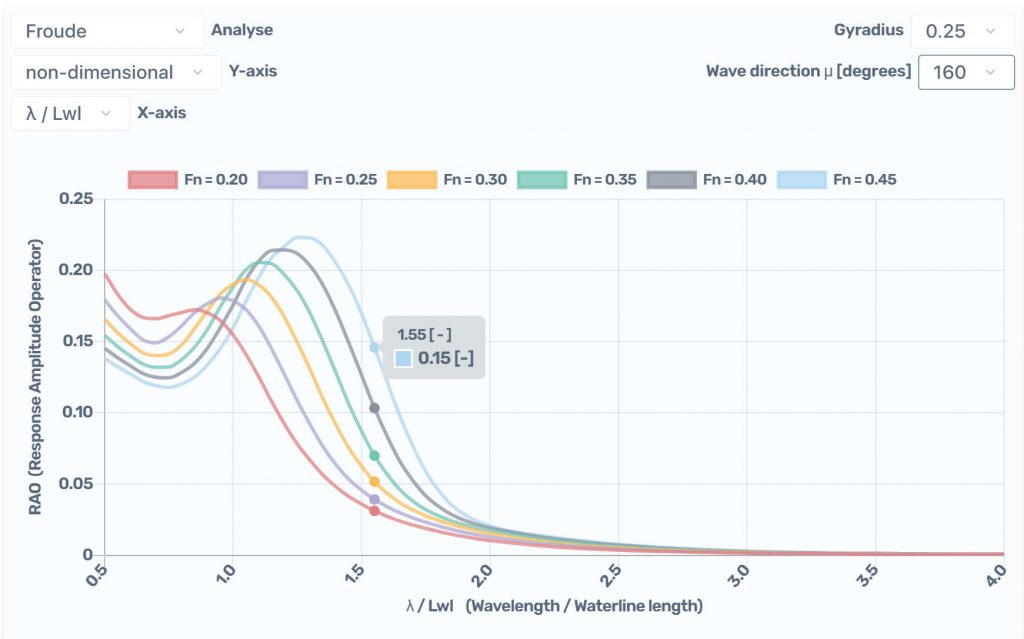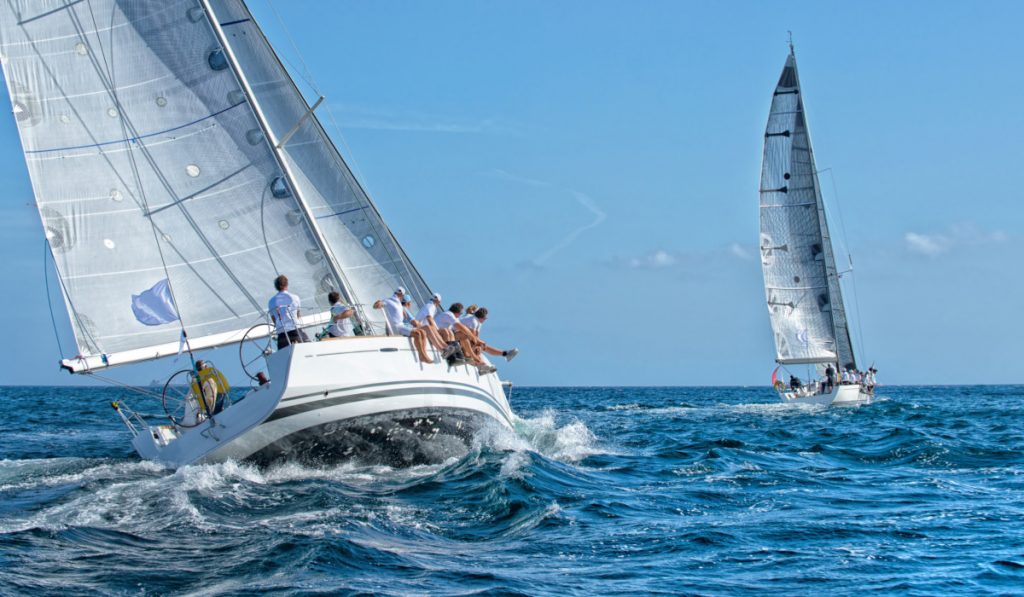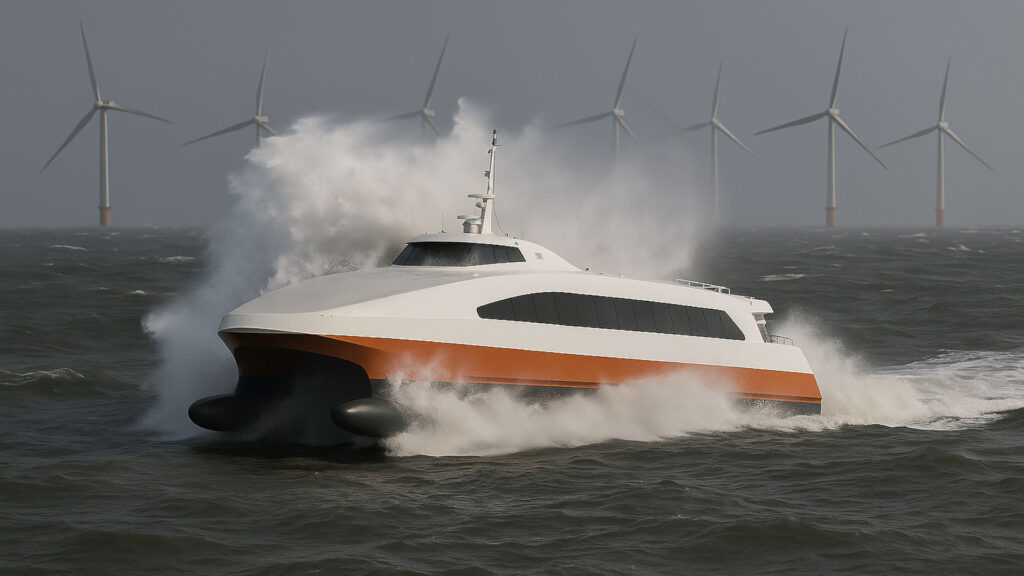Added resistance in waves: Response Amplitude Operator (calculation)

Response Amplitude Operator (RAO)
The performance of a sailing boat is affected by the presence of surface waves. To understand the boat’s behavior under waves, it is necessary to model the irregular shape of the water’s surface. This is usually achieved by a mathematical tool called Wave Spectral Density.
At the same time, developing a model for the boat is also necessary. This mathematical model will receive as an input a particular sea state (modelized in the form of a wave spectral density) and will output the resistance caused by the waves the boat will encounter when sailing in such conditions. We will call such a boat’s model the Response Amplitude Operator (RAO).
To be able to compare different design alternatives and boats, the RAO must consider the primary design parameters of interest as far as added resistance in waves is concerned, such as the longitudinal radius of gyration, length, draft, beam, displacement, and prismatic coefficient. Also, the RAO must take into account that the boat’s response depends on the encounter frequency and direction of the waves.
How it works
When sailing against waves, a sailing craft experiences an additional resistance that penalizes its performance. To study how the boat is affected, one of the methods developed requires both a statistical model of the sea’s surface the yacht is sailing in (usually through the wave spectral density) and the Response Amplitude Operator (RAO) of the yacht (yacht’s response to waves of different amplitudes and frequencies).
This calculation estimates the RAO (Response Amplitude Operator) of an arbitrary yacht. The calculation needs basic hull data such as LWL, TC, BWL, ∇C, and CP and the value of the density of the water (default is 1026 kg/m3). The latter is necessary for transforming the non-dimensional RAO into a dimensional one.
The results are calculated for the combination of different values of the longitudinal radius of gyration, Froude number, and wave directions:

See also:
- Wave spectral density (calculation).
- Added resistance in waves of a yacht (calculation).
- Added resistance in waves knowing yacht’s radius of gyration (calculation).
- What the hydrodynamic resistance is and why it matters.
- Sea state and wave forecasting.
- Surface waves.
- Introducing the hull.
References:
Some of the links shown below are affiliate links and we may earn a commission at no additional cost to you:
-

Claughton A. R., Wellicome J. F., Shenoi, R. A. (2006). Sailing Yacht Design: Theory
Check -

Larsson, L., Eliasson, R.E, Orych, M. (2022). Principles of Yacht Design
Check -

Fossati, F. (2009). Aero-Hydrodynamics and the Performance of Sailing Yachts
Check -

Slooff, J. (2018). The Science behind Sailing
Check

























